- News
- Reviews
- Bikes
- Components
- Bar tape & grips
- Bottom brackets
- Brake & gear cables
- Brake & STI levers
- Brake pads & spares
- Brakes
- Cassettes & freewheels
- Chains
- Chainsets & chainrings
- Derailleurs - front
- Derailleurs - rear
- Forks
- Gear levers & shifters
- Groupsets
- Handlebars & extensions
- Headsets
- Hubs
- Inner tubes
- Pedals
- Quick releases & skewers
- Saddles
- Seatposts
- Stems
- Wheels
- Tyres
- Tubeless valves
- Accessories
- Accessories - misc
- Computer mounts
- Bags
- Bar ends
- Bike bags & cases
- Bottle cages
- Bottles
- Cameras
- Car racks
- Child seats
- Computers
- Glasses
- GPS units
- Helmets
- Lights - front
- Lights - rear
- Lights - sets
- Locks
- Mirrors
- Mudguards
- Racks
- Pumps & CO2 inflators
- Puncture kits
- Reflectives
- Smart watches
- Stands and racks
- Trailers
- Clothing
- Health, fitness and nutrition
- Tools and workshop
- Miscellaneous
- Buyers Guides
- Features
- Forum
- Recommends
- Podcast
review
 Merida Reacto 6000
Merida Reacto 6000£2,950.00
VERDICT:
Great aero bike on a budget – but change the wheels as soon as you can to get the most out of it
Very stiff
Quick performance
Sharp handling
Very good value
Disappointing wheels
Can feel excessively rigid at times
Weight:
8,570g
Contact:
At road.cc every product is thoroughly tested for as long as it takes to get a proper insight into how well it works. Our reviewers are experienced cyclists that we trust to be objective. While we strive to ensure that opinions expressed are backed up by facts, reviews are by their nature an informed opinion, not a definitive verdict. We don't intentionally try to break anything (except locks) but we do try to look for weak points in any design. The overall score is not just an average of the other scores: it reflects both a product's function and value – with value determined by how a product compares with items of similar spec, quality, and price.
What the road.cc scores meanGood scores are more common than bad, because fortunately good products are more common than bad.
- Exceptional
- Excellent
- Very Good
- Good
- Quite good
- Average
- Not so good
- Poor
- Bad
- Appalling
Just like its big brother, the Reacto Team-E, the Merida Reacto 6000 is a very fast and very stiff aero road bike, and in this guise is a great aero bike on a budget.
The cost savings come with some inevitable downsides, and the overall ride may be too stiff and aggressive for some, but if you want to ride fast then the Reacto CF3 frame has bags of potential and will suit weekend speed merchants as well as keen racers who don't mind upgrading the wheels.
> Buy now: Merida Reacto 6000 from Merida Bikes for £2950.00
About a year ago, Liam was one of the first reviewers to get his lucky mitts on the Reacto Team-E, Merida's top exponent of the all-singing, all-dancing CF5 iteration of its latest Reacto frame. He found it to be every inch the race bike that a WorldTour team rider could want (more or less), but of course, we should all be so lucky if we can afford a bike that retails close to five figures.
Trouble is, most of us can't (or won't) spend that kind of cash. Happily, this is where the CF3 version of the Reacto frame comes in, supposedly delivering the same racy performance and pedigree of its CF5 sibling, just with a small weight penalty thanks to the heavier carbon layup, and a big cost saving.
More on that weight penalty later – the key take-home is this: Merida has managed to instil the same stiffness and handling as you'll find in its high-end Reacto frameset, for which it should be applauded.
The Reacto frame even in this version is among the most laterally stiff road frames I've ever ridden. Whether you're controlling your effort in the saddle, or getting out of it for a short spurt, it laps up the punishment with ease. Every pedal stroke is channelled into forward motion, and once you get up to 30km/h or so on a flat piece of road, it simply glides along, seemingly winning the invisible battle with the air.
There's some comfort to be had here, too. I've been pleasantly surprised by the Reacto's ability to deal with pimply tarmac, and although I wouldn't want to be taking it over broken and rutted roads too often, it handles with composure when faced with the kinds of roads I ought to write a strongly worded letter to Wiltshire County Council about.
Climbing on the Reacto is good fun, too. For the ultimate experience heading uphill on a Merida, you'll arguably want to look more towards the all-rounder Scultura, but the Reacto's sheer rigidity means it can more than handle its own for any given effort.
Settling onto the tops and tapping out a high-tempo rhythm feels so easy and efficient (and once or twice saw me accelerating away from my ride buddies by accident), while a high-powered spurt to get over a rise in the road is the Reacto's bread and butter alongside its flatland prowess. The super-stiff head tube/headset assembly, Vision SCR stem and Merida alloy bar combination was able to absorb any maximal effort that I put into it, which provides pin-sharp reactions.
Heading downhill, the Reacto's sharp and stiff front end enables you to really stick it into corners, the aggressive riding position teamed with a 990mm wheelbase (in a size medium) that provides enough length to avoid any unwanted twitchiness or nervousness while enticing you to push on a bit harder.
This latest Reacto has been designed to be more compliant than its previous iteration, but while the dropped seatstays, S-Flex seatpost and 25mm tyres that balloon out to closer to 27mm in this configuration do a decent job of calming the experience, this remains a frame with some knife-edge rigidity right at its core. It's a thoroughbred racer, just like its top-of-the-range brother, and sometimes it can be slightly unforgiving.
This combined with its naturally aggressive position means longer rides can take a bit more out of you if you're not fully accustomed to a road bike of this type. I have a good level of flexibility and no injuries to manage, but if you struggle with your mobility or have an existing injury that you need to ride around, it's worth getting a bike fit first to check that it's within your range.
Notably, I had the most fun on the Reacto when riding some smooth B-roads and shallow climbs, putting efforts in and generally enjoying riding fast – aside from racing, exactly the kind of riding the Reacto is designed for.
Geometry
The 6000 features exactly the same geometry as the Team-E, incorporating a racy low front end with a long top tube to help you get into an aero position, with a steeply angled seat tube to push you further forward over the bottom bracket.
My test bike came with a good set of spacers to raise the front end a fair chunk, yet it remains an incredibly aggressive bike that encourages you to hunker down and really get on with the job at hand (riding fast).
The head tube angle pitches more of your weight through your hands, which has the effect of magnifying every steering input you make. You might expect the Reacto to be the kind of bike that you need to wrestle into corners, but once you've got used to the way it responds, you quickly learn that it can respond deftly to the lightest touch.
The compact wheelbase with the 408mm chainstays keep things sharp-yet-composed – there's enough length to help the Reacto glide when up to speed, without holding it back when you want to get out of the saddle up a climb.
Frame and fork
This fourth-generation Reacto frame features refined NACA-inspired aero tubing, and the CF3 version of the frame and fork here weigh a claimed 1,165g and 490g respectively (200g and 33g more than the CF5) in a size medium.
While 233g isn't insignificant, Merida is at pains to point out that there's no loss of stiffness or stability with this second-tier layup.
What the tweaked frame shape does provide is clearance for 30mm tyres, along with tidied up cable routing in the fork, and dropped seatstays, which are said to provide marginal improvements over the previous generation both in a straight line and at varying yaw angles.
The CF3 frame here comes ready for routing of both mechanical and electric drivetrains. The CF5 version that Liam tested can only accept Di2 or wireless shifting.
Merida has also included its disc brake cooling fins, which first made an appearance on the Scultura Disc back in 2016. These are said to help dissipate heat more effectively from the pads, in turn reducing brake fade under heavy use. Whether or not they're strictly necessary in combination with 160mm rotors, they do look pretty cool – and if someone were ever to take their Reacto out to the mountains in the summer, there's a chance they could come in handy.
The frame also features an internal seatpost clamp to fix a proprietary aero seatpost. I found it easy to use and experienced no slippage or creaking at all, while the seatpost itself features an S-Flex cutout that is said to help reduce road buzz and severe shocks.
Groupset
The 6000 comes with mechanical Shimano Ultegra R8000, which at the time of writing seems to be a dying breed, with the new 12-speed Ultegra R8100 currently only set to be available in Di2 format.
It remains an outstanding groupset, with slick shifts and excellent disc brakes, and, frankly, is more than up to the task of taking anyone through a season or two of local circuit or road racing.
Merida does cut a couple of small (acceptable) corners from the full Ultegra suite – the chain is a KMC model, while the cassette is from the 105 stable – which help to keep the 6000 under the £3,000 mark without noticeably compromising performance.
You get a semi-compact chainset (52/36t) and 11-30t cassette which makes use of the long cage rear derailleur and ensures you've got an easier gear to escape to should you need it.
Finishing kit
The Reacto 6000 comes with some tidy finishing kit for the price of the bike. An FSA SCR stem attaches to a Merida Expert CW handlebar which keeps the front end of the bike tidy by tucking cables away neatly, but still enables you to swap components should you need to customise the fit.
The SCR system requires a proprietary headset and spacers, so although you can opt for any 1 1/8in stem if you do need to swap it out, you'll probably want to stick to a different length of the same model to keep the clean lines that the SCR system affords.
The handlebar is perfectly suited to a bike of this type, complete with an inward curve at the hoods that helps tuck you into a more aero position. It's not completely to my taste, but if aero performance is your main concern then it's a smart choice given that the vast majority of resistance comes from the rider.
I found the Merida Expert CC saddle acceptably comfortable without being particularly revolutionary. There's no full cutout channel, but if you have specific saddle requirements then it's likely you'll upgrade this anyway.
Wheels and tyres
Speaking of upgrades, if there is one place that I would spend extra money on the Reacto 6000, it's the wheelset. Supplied are alloy Fulcrum Racing 800s, which although seemingly sturdy and reliable enough, can't do justice to the frameset.
As a starter semi-aero set, they're solid wheels that do offer some contemporary design thinking, including tubeless compatibility and a 19mm internal rim width, and squeeze in a 33.7mm rim depth for some aero efficiency, but they weigh a hefty 1,960g (claimed), feature basic sealed cartridge bearings and simply lack the zip, reactions and ride quality of plenty of sub-£1,000 carbon wheelsets.
If I were looking to get the most bang for my buck from the outset, I'd be tempted to save £650 by opting for the Reacto 4000 with a Shimano 105 groupset, then plough that saving into some lighter and faster wheels, reserving the Merida own brand rims that you get with that model for the winter.
The 6000 comes fitted with 25mm Continental Grand Sport Race clincher tyres, which as a GP5000 user I've been pleasantly surprised by. Although there is a step difference between the two, I've had no problems with the Grand Sport Races, which have provided decent grip, suppleness and resilience during my winter test period, and would happily use them until they wore out before upgrading (or keep them fixed to the supplied Fulcrums while fitting faster rubber to an upgrade wheelset).
Value
When it comes to value, the Reacto 6000 packs a pretty big punch for what is effectively an out-and-out aero road bike. Although a little heavy, weighing in at 8.57kg in this medium size, it can deliver serious performance and has the potential to be an incredibly capable race bike.
At £2,950, it has precious few direct rivals in the sub-£3,000 category (plus, as I've noted, you can go even cheaper while keeping the centrepiece frame in the 4000 or even 5000-spec models).
> Buyer’s Guide: 25 of the best and fastest aero road bikes
Alternatives include a Giant Propel Advanced Disc model for either £3,499 or £2,699 at time of writing, but either comes with its share of compromise, whether that's a £550 price hike for an Ultegra groupset but with carbon wheels for the Advanced Disc 1, or a 105 groupset with a similar level finishing kit for the Advanced Disc 2 for £2,699.
You could also move away from the big brands and consider an Orro Venturi Evo 105, which saves you around £650 at time of writing, albeit for a 105 groupset (and, incidentally, the same Fulcrum wheelset as the Reacto 6000). Or you could upgrade to the STC Ultegra model for £2,699.99 – you can read about that frame here.
Conclusion
The Merida Reacto 6000 is a competitively priced aero bike with bags of speed in reserve. It has a weak spot with its wheelset, and the finishing kit might need upgrading if you have specific needs, but the excellent frameset is a real winner and worthy of consideration.
Verdict
Great aero bike on a budget – but change the wheels as soon as you can to get the most out of it
road.cc test report
Make and model: Merida Reacto 6000
Size tested: M/56
About the bike
List the components used to build up the bike.
FRAME - REACTO CF3 IV
FORK - REACTO CF3 IV DISC
WHEELSET - Fulcrum Racing 800 DB
FRONT TYRE - Continental Grand Sport Race
REAR TYRE - Continental Grand Sport Race
HUBS - MERIDA EXPERT SL
CHAINRINGS - Shimano Ultegra
BOTTOM BRACKET - SM-BB72-41B, Pressfit 86.5
CASSETTE - Shimano CS-R7000
CHAIN - KMC X11
SHIFTERS - Shimano Ultegra disc
FRONT DERAILLEUR - Shimano Ultegra
REAR DERAILLEUR - Shimano Ultegra
BRAKE LEVER - Shimano Ultegra
BRAKES - Shimano Ultegra
ROTORS - Shimano Ultra
HEADSET - FSA ACR
STEM - FSA SCR
HANDLEBAR - MERIDA EXPERT CW
GRIP - MERIDA ROAD Expert
SEAT POST - MERIDA Team CW
SADDLE - MERIDA EXPERT CC
SEAT CLAMP - MERIDA REACTO Aero
Tell us what the bike is for and who it's aimed at. What do the manufacturers say about it? How does that compare to your own feelings about the bike?
Merida says:
The Merida Reacto has always been a class leading aero bike, combining state of the art aerodynamics with rider comfort.
The 4th generation model is more slippery and beautiful than ever, incorporating wider tyres, much neater cockpit cable integration and a series of incremental improvements to boost performance.
In the world of Pro-Tour racing no area can be ignored. Computational Fluid Dynamics (CFD) calculations were used to model performance in a virtual wind tunnel, guiding the changes which offered the most aerodynamic benefit:
Prototypes were wind tunnel tested following the German TOUR magazine standard, including the 'moving leg dummy' test. The Reacto CF5 needs just 209 watts effort for 45 km/h speed, 1 watt faster than its predecessor so it's in the leading group of aero road bikes ever tested by TOUR magazine.
Small details such as integrating the front disc cooler behind the fork and the rear disc caliper in the rear triangle and creating new bolt through axles with the thread integrated into the fork dropout minimise drag and improve aerodynamic performance.
A myriad of small improvements over-compensate for the aerodynamic compromises made to give the Reacto bigger tyres, resulting in the perfect package of comfort, aerodynamic, lightweight and style.
All Reacto come with powerful hydraulic disc brakes. Calipers are mounted on the chainstay for better dissipation of braking forces using the flat mount standard for a neat, flush fit. Calipers sit on top of CNC'd aluminium Disc Cooler fins which reduce operating temperatures by up to 35%.
Where does this model sit in the range? Tell us briefly about the cheaper options and the more expensive options
The 6000 sits above the 5000 (part-Ultegra) and 4000 (105) specs in the range, while the 'Limited' version is £250 more, featuring Shimano 105 but with carbon wheels as standard.
Frame and fork
Overall rating for frame and fork
9/10
Tell us about the build quality and finish of the frame and fork?
I've had no problems at all (no cable rattling either).
Tell us about the materials used in the frame and fork?
Merida CF3 carbon.
Tell us about the geometry of the frame and fork?
Long and low, and very much geared towards someone with a flexible back and strong core.
How was the bike in terms of height and reach? How did it compare to other bikes of the same stated size?
If you know how a race bike should size, this is bang in line with that. If you don't, expect a longer reach.
Riding the bike
Was the bike comfortable to ride? Tell us how you felt about the ride quality.
Rigid and firm. Like Liam found with the Team-E, it's borderline between stiff and harsh.
Did the bike feel stiff in the right places? Did any part of the bike feel too stiff or too flexible?
Absolutely, although I found the front end to feel a little too 'on the edge' for my taste. I soon got used to it though.
How did the bike transfer power? Did it feel efficient?
Yes, despite the limitations of its wheels, there's plenty of lateral stiffness and directness here.
Was there any toe-clip overlap with the front wheel? If so was it a problem?
A small amount when I went looking for it specifically at the end of the test period, but I never noticed it while riding.
How would you describe the steering? Was it lively neutral or unresponsive? Very direct and lively, although you soon learn to steer more delicately to compensate.
Tell us some more about the handling. How did the bike feel overall? Did it do particular things well or badly?
The Reacto is a quick-handling bike, even for one of its type. Although this bike is arguably a little portly, it's still plenty responsive enough.
Which components had the most effect (good or bad) on the bike's comfort? would you recommend any changes?
The wheelset is by far and away the weak point. In terms of performance, comfort, and generally maximising the excellent frame, this is where you want to spend any more money.
Which components had the most effect (good or bad) on the bike's stiffness? would you recommend any changes?
The wheels aren't great, but the FSA SCR stem is – a great platform for any wrenching around.
Which components had the most effect (good or bad) on the bike's efficiency? would you recommend any changes?
Again, the wheels are poor, a little bit like asking Usain Bolt to run in wellies. Change them smartly and the Reacto will be transformed into a seriously competitive racer and fast sportive killer.
Rate the bike for efficiency of power transfer:
10/10
Even this cheaper frame is outstanding.
Rate the bike for acceleration:
6/10
The wheels really let the side down here, plus there are marginal improvements to be had with the tyres.
Rate the bike for sprinting:
7/10
Upgrade the wheels, and we'd be looking at a 9 or 10 score.
Rate the bike for high speed stability:
8/10
Rate the bike for cruising speed stability:
9/10
Rate the bike for low speed stability:
8/10
Rate the bike for flat cornering:
9/10
Rate the bike for cornering on descents:
8/10
Rate the bike for climbing:
6/10
Again, the wheels let the side down here. It's not the lightest frame anyway, so even with the lightest climbing wheels and some finishing kit upgrades you might struggle to get under the UCI limit (if that's important to you).
The drivetrain
Rate the drivetrain for performance:
8/10
At time of writing, it might look a dying breed, but Ultegra R8000 remains excellent.
Rate the drivetrain for durability:
8/10
No issues, and Ultegra R8000 has more than earned a good reputation.
Rate the drivetrain for weight:
7/10
Rate the drivetrain for value:
6/10
105 is better value, pound for pound.
Wheels and tyres
Rate the wheels for performance:
3/10
The Racing 800s are solid, but for a bike of this type they're disappointing.
Rate the wheels for durability:
7/10
No issues in testing, although they may not be easily serviceable.
Rate the wheels for weight:
3/10
Rate the wheels for comfort:
6/10
Rate the wheels for value:
6/10
They help keep the cost of the 6000 down, for sure.
Tell us some more about the wheels.Did they work well in the conditions you encountered? Would you change the wheels? If so what for?
I'd change them. Any road.cc positively reviewed carbon wheelset in the region of £800 or more will transform the bike.
Rate the tyres for performance:
7/10
Rate the tyres for durability:
7/10
Rate the tyres for weight:
6/10
Rate the tyres for comfort:
7/10
Rate the tyres for value:
7/10
Tell us some more about the tyres. Did they work well in the conditions you encountered? Would you change the tyres? If so what for?
The Continental Grand Sports are perfectly acceptable in most conditions. I disagree with Liam here – GP5000s would be a welcome upgrade, in clincher or tubeless format.
Controls
Rate the controls for performance:
9/10
Rate the controls for durability:
8/10
Rate the controls for weight:
8/10
Rate the controls for comfort:
7/10
Personally, I don't like the angle of the hoods, which affects how the levers feel.
Rate the controls for value:
8/10
Tell us some more about the controls. Any particularly good or bad components? How would the controls work for larger or smaller riders?
The aero angled handlebar tilts the hoods inwards. I don't find this very comfortable at all.
Your summary
Did you enjoy riding the bike? Yes
Would you consider buying the bike? Yes, if I were in the market for a racer and/or my roads were generally smooth.
Would you recommend the bike to a friend? Yes
How does the price compare to that of similar bikes in the market, including ones recently tested on road.cc?
At £2,950, it has precious few direct rivals in the sub-£3,000 category (plus, as I've noted, you can go even cheaper while keeping the centrepiece frame in the 4000 or even 5000-spec models).
Alternatives include a Giant Propel Advanced Disc model for either £3,499 or £2,699 at time of writing, but both come with compromises, whether that's a £550 price hike for an Ultegra groupset but with carbon wheels for the Advanced 1, or a 105 groupset with a similar level finishing kit for the Advanced 2 for £2,699.
You could also move away from the big brands and consider an Orro Venturi Evo 105 which saves you around £650 at time of writing, albeit for a 105 groupset (but incidentally includes the same Fulcrum wheelset as the Reacto 6000). You could also upgrade to the STC Ultegra model for £2,700.
Rate the bike overall for performance:
8/10
Rate the bike overall for value:
8/10
Use this box to explain your overall score
There's plenty to admire about the Reacto CF3 frameset and the way it handles. It's (potentially) prodigiously quick and well suited to its target market. Those wheels let the side down, but upgrade them and I reckon this bike would be able to hold a candle to rivals twice the price. Overall, it's a very good bike for the money.
About the tester
Age: 30
I usually ride: My best bike is:
I've been riding for: I ride: I would class myself as:
I regularly do the following types of riding:

















































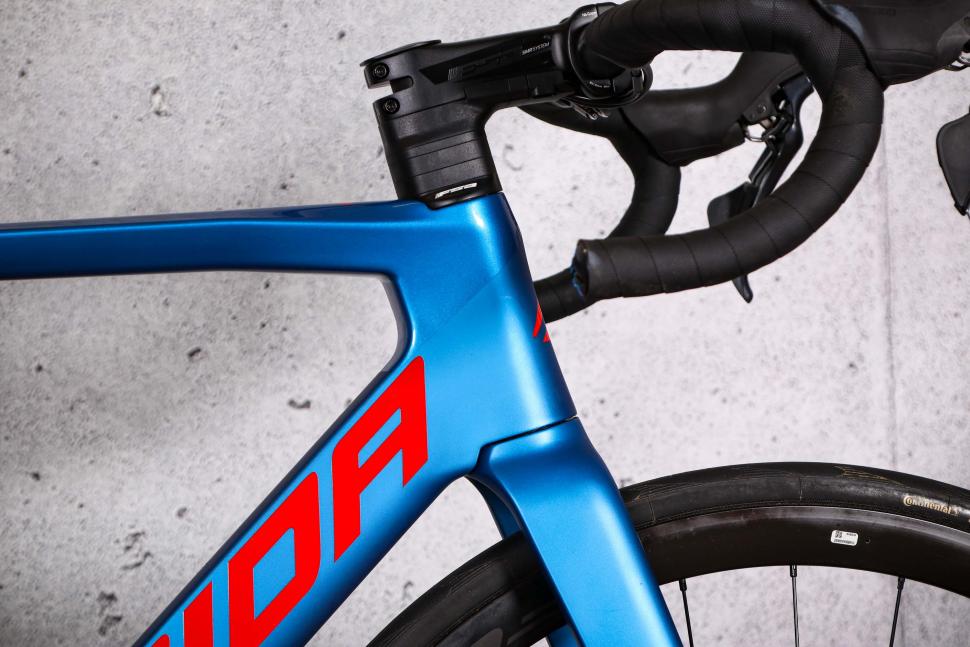

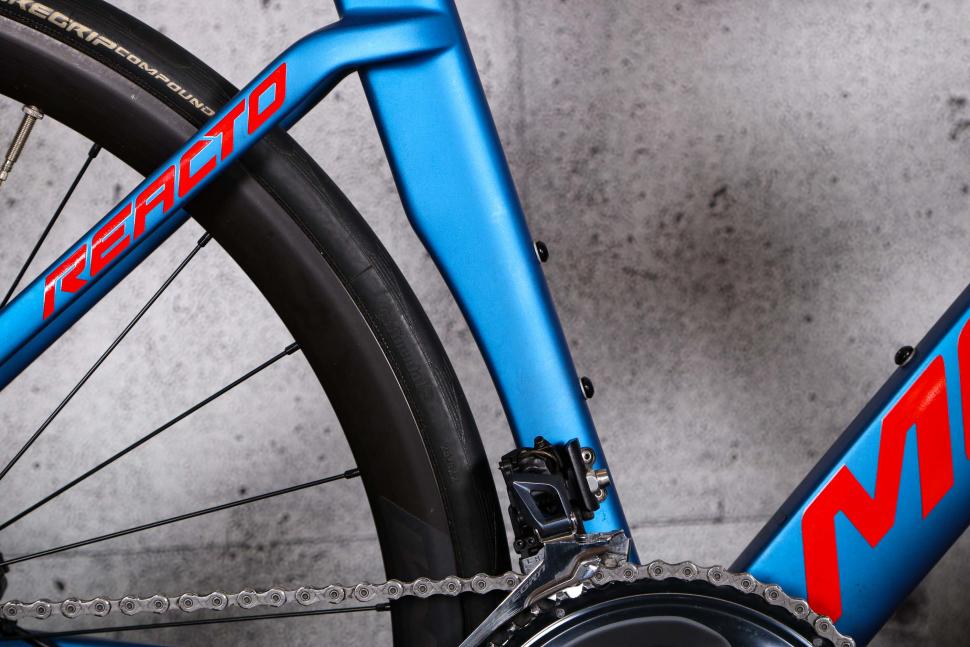
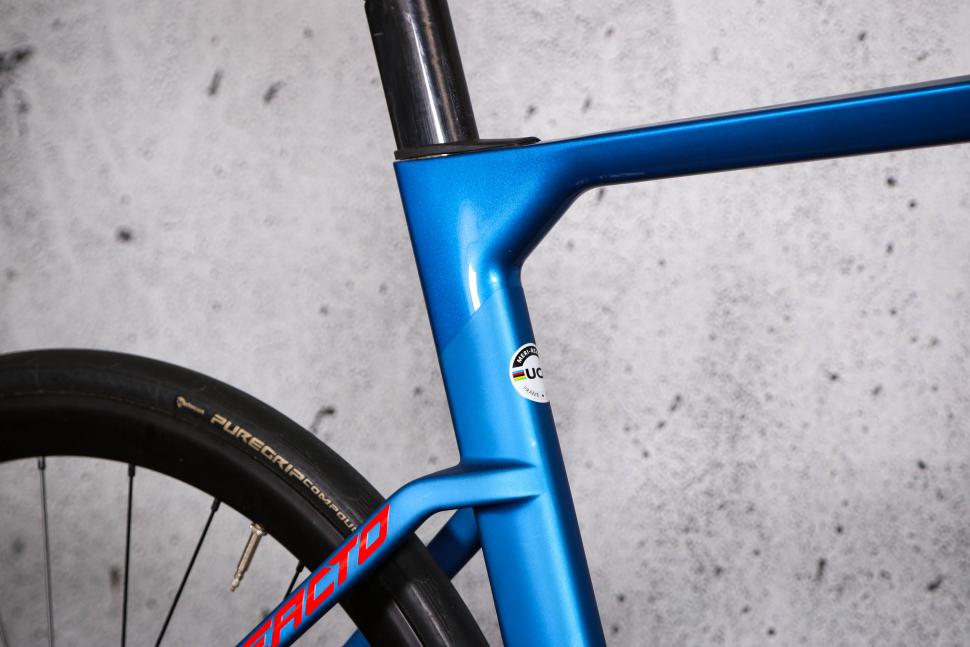









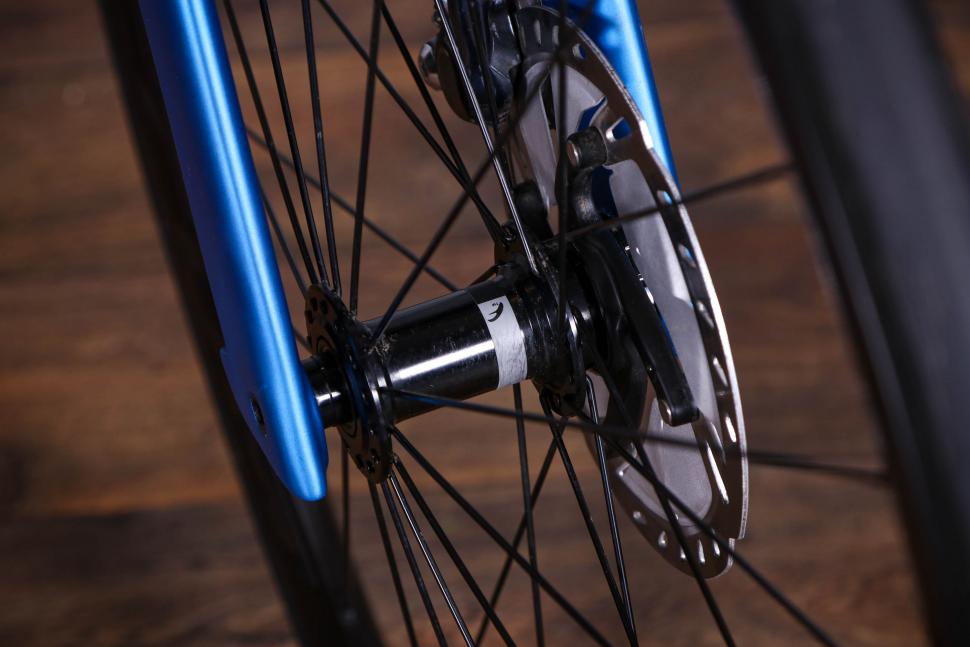



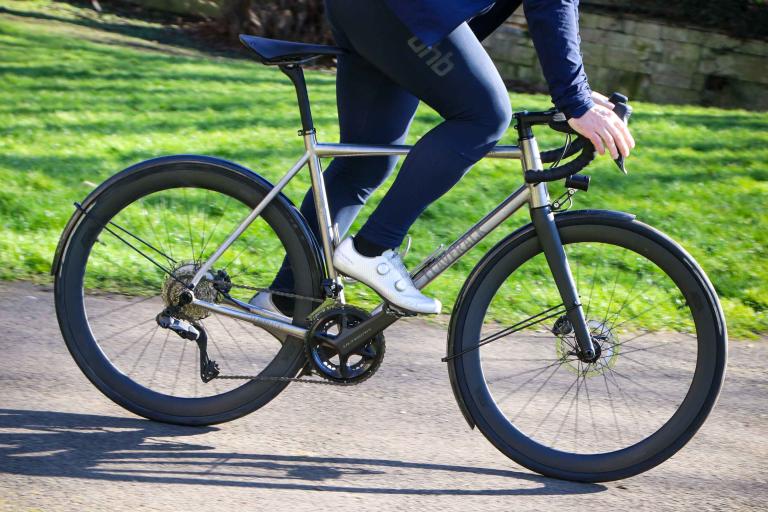

fwiw in that area, yes absolutely its normal, its like a lowland heath sandy area, most of the b roads have alot of sand at times,, it just blows...
I'm glad the article went into more detail and cleared things up, the headline had me worried that some autonomous building had run rampant and...
Still here, just showing a few signs of wear and tear. Hopefully still serviceable for some years to come.
Has he fully recovered though, and will he ever?...
How can you know that you are "equally fearful" as "any female cyclist"? There is no possible way of quantifying such emotions and female cyclists...
I think it would be fairer to blame the moon - as in "my client is a loony".
Nice idea but Gloucestershire Constabulary are not interested as exemplified by this prvious NMOTD. Not only was there NFA for the close pass in...
Peace Was Never An Option
I think black boxes are great for early detection of cognitive decline and/or sight problems. Someone's driving is going to become much less smooth...
It's a fashion. https://guildford-dragon.com/shalford-driver-who-smashed-shalford-war-me...